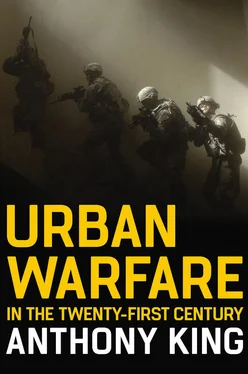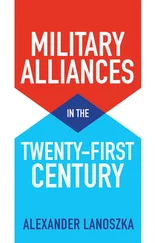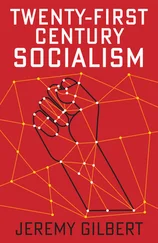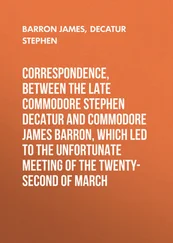1 ...6 7 8 10 11 12 ...15 Yet, while numbers are important, they are not sufficient to define urban conflict as war. Political motivation is, of course, very important here. In a large city, it might be possible that 1,000 citizens could be killed in quite random, unconnected murders. Public order would be severely compromised in this situation, but it would not be war. Crime descends into warfare when the objectives of criminals become explicitly political – when criminals are not simply robbing civilians or disputing drugs deals, but are actively contesting terrain and the application of the law against the state, compelling their enemies to do their will. Similarly, at a certain point, terrorist attacks escalate into a serious challenge to the state when they start to kill enough people.
While urban warfare is most obvious in a battle like Mosul, there is no reason to limit the analysis of contemporary warfare in cities to high-intensity conflict. On the contrary, to have a full appreciation of the diversity and complexity of urban warfare in the twenty-first century, it is pertinent to include lower levels of conflict in the analysis. Gang warfare, terrorism and protests have often taken place alongside genuine urban warfare; they are part of the phenomenon. Although Brazilian favelas might typically be relatively peaceful for most of their inhabitants, not only do they have very high murder rates, but they are periodically the scene of intense gun battles between rival gangs, and between gangs and the police. ‘In 2018, this violent territoriality was reflected in 83 instances of gunfights lasting two hours or more.’ 5At such times, favelas are rightly described as warzones. The actions of police and gangs in these clashes provide useful additional evidence about the character of urban warfare today, and should not be ignored simply because no official war has been declared or recognized between them.
It is now universally acknowledged that the principle reason for the rise of urban warfare is demographic. There are simply so many people now living in cities that conflict has necessarily converged on urban areas. In 1960, the world population was 3.5 billion, of whom 0.5 billion lived in cities. In 2020, the world population was 7 billion, of whom 3.3 billion lived in cities. 6As early as 1996, commentators began to notice this urban turn. Russell Glenn, one of the first urban experts, rightly noted the military implications of this demographic revolution: ‘Demographics ensure that cities will become future battlegrounds.’ 7At the same time, a prominent US Army officer, Ralph Peters, made the same point: ‘We declare that only fools fight in cities and shut our eyes against the future. But in the next century, in an uncontrollably urbanizing world, we will not be able to avoid urban deployments.’ 8Their predictions have been vindicated. Commentators from across the spectrum have been all but unanimous about the prime cause of the rise of urban warfare in the twenty-first century: 9‘The rise of urbanization – and all of the complexity it entails – increases the likelihood that at least some future conflicts will take place in cities.’ 10Similarly, the US Army’s publication, Megacities and the United States Army , noted that the rise in the number of huge urban conurbations has increased the likelihood of fighting in cities. Since more people live in cities today than in the past, in often desperate conditions, it is inevitable, on this account, that conflict has and will become more metropolitan. Urbanization, in and of itself, has forced war into cities:
The nexus between globalization, urbanization and rapid demographic growth in the ‘global South’ of the developing world appears to be changing the character of warfare. We appear to be on the cusp of an ‘urban century’ dominated by burgeoning megacities with a growing potential for violent implosions capable of causing major political crises. 11
Demographics are plainly important. However, in addition to urbanization, scholars have also emphasized the asymmetric advantages of fighting in cities for weaker, nonstate insurgents. Cities offset the advanced weaponry that states possess, while maximizing the utility of suicide attacks and IEDs. Plainly, cities have always offered major defensive advantages. However, scholars have claimed that, against technologically superior state forces, contemporary cities – especially ones with rapidly growing slums – now offer the best opportunities for evasion, concealment, ambush and counterattack. 12By operating in cities, insurgent groups also enhance the protection afforded by the laws of armed conflict and international humanitarian law. Knowing that Western powers, in particular, will seek to minimize civilian casualties, insurgents have actively sought to operate among the people. 13Indeed, the city offers such advantages that some have claimed that urban insurgency has constituted the major military challenge of the early twenty-first century. 14
When scholars invoke demographics and asymmetry, they have been mainly concerned with explaining urban insurgencies and civil conflict. 15This is not unreasonable; most urban battles this century have occurred as part of civil conflicts. Nevertheless, these scholars have also assumed that their explanations of those civil conflicts apply equally well to interstate wars. For instance, at the beginning of his work on the history of the US Army’s urban battles, Alec Wahlman argues that demography and asymmetry have been the decisive variables in determining contemporary urban warfare. 16He then goes on to analyse the battles of Aachen, Manila, Seoul and Hué. In each case, including Hué, these were battles between state forces – not between insurgents. The implication is clear. Given urban demography and asymmetry, the US Army should expect to operate in cities against peer opponents in the future, just as much as against insurgents. The same reasoning is evident in the work of Alice Hills and David Kilcullen. 17States will also fight against each other in cities because of urban demographics and the protection that cities offer against even the most advanced weaponry.
Clearly, although interstate and civil wars have merged in the last decade into a form of hybrid conflict, some clarification is required here. Both interstate urban warfare and civil urban conflict require explanation. Yet, for the sake of clarity, it is necessary to discuss them separately. It is convenient to discuss the question of interstate warfare first and to consider why it has tended, and is increasingly likely, to converge on cities. Because scholars have focused primarily on insurgencies, they have prioritized demography and weaponry to the exclusion of all other factors. They presume that because cities have become so large, they are almost unavoidable in any future campaign. In addition, the development of advanced surveillance technologies and precision munitions will encourage even heavy state forces to take refuge within urban areas. There is no denying the importance of urban demographics and weaponry to urban warfare. They have always played a constitutive role in this kind of warfare and are likely to do so in the future. However, there is an obvious gap in the current literature.
Historically, urban warfare has also been constituted by a third factor: the size of military forces themselves. Yet, in the contemporary literature, there is almost no discussion of the size of military forces today. This factor has fleetingly been acknowledged, but never systematically investigated. 18Perhaps, because force size seems such a banal fact, its potential significance to the urbanization of interstate war has been ignored. However, by highlighting the importance of force size – numbers – it may be possible to improve on existing explanations of interstate urban warfare.
Читать дальше












